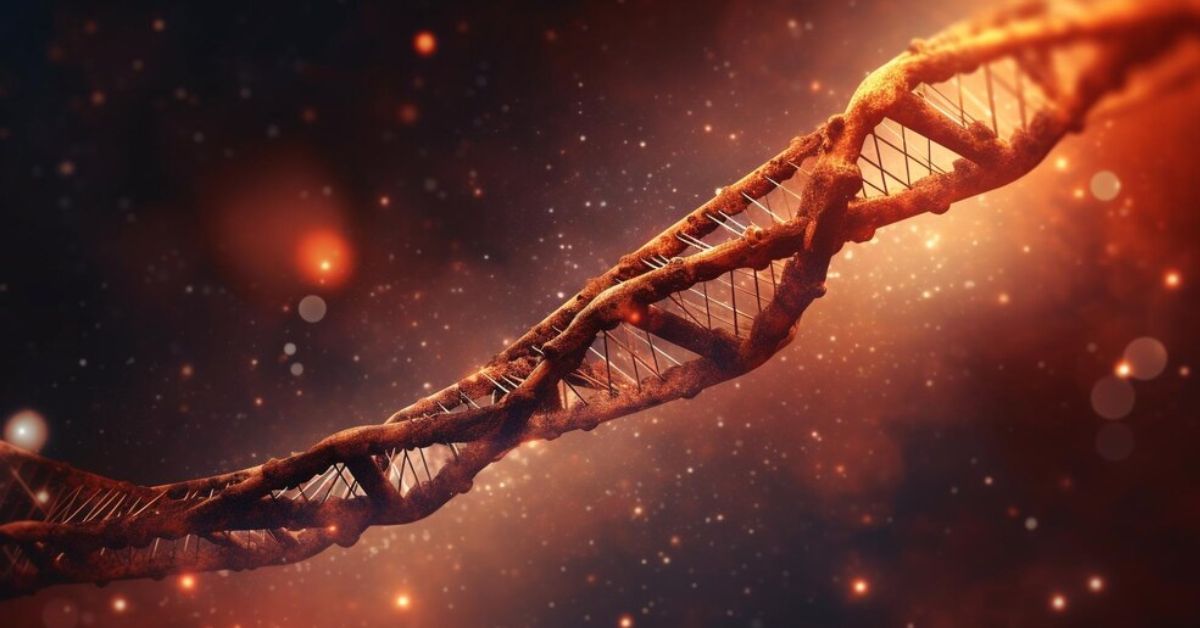HEALTH
Tracing Your Roots: Understanding Genetic Heritage Through Ancestry DNA

Tracing our roots has always been a fascination for many people. The idea of uncovering the stories of our ancestors has become more accessible in recent years with the advent of ancestry DNA testing. This scientific tool has the potential to unlock a world of information about our genetic heritage and cultural background. Below, we will explore how ancestry DNA works, its importance in uncovering your family history, and the insights it provides about your origins.
Exploring Your Genetic Legacy
DNA testing allows individuals to explore their genetic makeup and uncover previously hidden connections. By comparing your genetic data with databases from different populations, you can begin to piece together your ancestral story. The results often reveal unexpected connections to distant regions, providing a deeper understanding of who you are and where your ancestors came from.
One of the most significant aspects of genetic testing is identifying genetic markers specific to particular groups. These markers are inherited over generations and remain relatively unchanged, offering a detailed map of your genetic past. Many people find that they share genetic traits with groups from parts of the world they had no idea were part of their family’s history.
The best DNA upload sites help people gain access to broader databases and build connections with distant relatives. These platforms allow individuals to share their genetic information and discover previously unknown family connections. The global nature of these databases means that a simple DNA test can open up many possibilities for expanding your family tree.
Understanding your genetic heritage also has medical implications. Genetic testing can uncover predispositions to certain health conditions and provide valuable information for making informed decisions about your health. This aspect of DNA testing adds another layer of significance to exploring your genetic legacy.
Unlocking the Secrets of Your Family Tree
The journey of uncovering your family tree can be a deeply personal experience. Ancestry DNA tests can link you to specific regions and ethnic groups that have influenced your family’s history. These findings often spark curiosity about how past generations shaped who you are today.
One of the remarkable aspects of family tree research is the ability to trace direct connections to distant relatives. Many people have experienced the thrill of discovering relatives they never knew existed through shared genetic markers. This sense of connection to others is a powerful reminder that the stories of our ancestors are still woven into the fabric of our lives.
Ancestry DNA testing can also provide clarity on family myths or mysteries. Stories of distant relatives or legendary figures in the family often take on a new meaning when supported by genetic evidence. Whether confirming or disproving family lore, DNA testing can be a valuable tool for understanding the truth behind these tales.
Genealogy enthusiasts often use DNA results in combination with traditional research methods to unlock further details about their family tree. While DNA offers an exciting new perspective, historical records, documents, and other genealogical resources remain essential in constructing a full picture of family history.
How Ancestry DNA Reveals Your Origins
Ancestry DNA tests have the ability to trace the migration patterns of your ancestors over thousands of years. By analyzing specific markers within your DNA, scientists can determine which regions your ancestors likely lived in and how they moved across the globe. This historical perspective connects your genetic information to the broader story of human migration.
The results of an ancestry DNA test are often broken down into percentages, each representing different geographic regions. These percentages reflect the ancestral contributions from various populations over generations. Over time, as more people test their DNA, the accuracy of these results improves, offering increasingly precise insights into your origins.
Your DNA can also reveal connections to ancient civilizations and populations that no longer exist. This information can be both fascinating and humbling as it places you within the context of human history. Whether your DNA links you to early European settlers, indigenous populations, or ancient African tribes, these results serve as a powerful reminder of the interconnectedness of all people.
The ability to connect with distant cousins and relatives through shared genetic markers is one of the most exciting aspects of ancestry DNA. These connections can lead to meaningful relationships and shared research that enhances your understanding of your origins. The discovery of new family members often enriches the experience of learning about your genetic history and deepens your sense of belonging.
Overall, ancestry DNA testing offers profound insights into our genetic heritage, revealing connections to distant regions and relatives that were once hidden. It is a powerful tool for understanding our origins, enhancing our sense of identity and belonging while connecting us to the broader human story.
HEALTH
Why Ignoring Shoulder Pain Could Lead to Serious Consequences

Shoulder pain is a common complaint that many people experience at some point in their lives. Often, it is dismissed as a minor ache or a temporary strain that will resolve on its own. Ignoring persistent or severe shoulder pain can lead to significant and lasting consequences. The shoulder is one of the most complex joints in the body, responsible for a wide range of movements that we often take for granted. When pain arises, it is usually a signal that something is wrong, and neglecting it could cause further damage, chronic pain, or loss of mobility. This blog explores why taking shoulder pain seriously is crucial for maintaining health and quality of life.

The Complexity of the Shoulder Joint Makes It Vulnerable
The shoulder joint is a marvel of human anatomy, consisting of bones, muscles, tendons, ligaments, and bursae working together to provide an extraordinary range of motion. This complexity makes the shoulder prone to injury and wear. Unlike simpler joints such as the knee or elbow, the shoulder relies heavily on soft tissues for stability and function. Because of this, repetitive use, trauma, or poor posture can easily lead to conditions like rotator cuff tears, bursitis, or impingement syndrome. Ignoring pain in such a sensitive and complicated joint can allow these issues to worsen, potentially leading to irreversible damage that requires surgery or long-term therapy.
Importance of Professional Assessment
Because shoulder pain can stem from various causes, it is critical to get a professional assessment if the pain persists for more than a few days or is severe. Healthcare providers like Dr. Kruse can perform detailed evaluations using physical exams and imaging tests to pinpoint the cause. Early intervention through physical therapy, medication, or minor procedures can often resolve the problem without surgery. Ignoring shoulder pain closes the window for simpler treatments and increases the likelihood of complicated medical interventions.
Early Signs of Shoulder Problems Are Often Overlooked
Many people mistake mild shoulder pain for something trivial, like muscle soreness from exercise or sleeping in an awkward position. This mindset can delay seeking medical advice until the pain becomes unbearable or mobility is severely limited. Early signs such as stiffness, weakness, or a clicking sound when moving the shoulder should never be ignored. These symptoms often indicate underlying problems like tendon inflammation or small tears that can progress. Early diagnosis and treatment can prevent the condition from escalating, ensuring quicker recovery and less risk of complications.
Chronic Shoulder Pain Can Affect Daily Life
Persistent shoulder pain is more than a physical inconvenience; it can disrupt everyday activities such as dressing, cooking, driving, and even sleeping. The inability to perform these routine tasks comfortably can lead to frustration, dependence on others, and a reduced sense of independence. Chronic pain is closely linked to mental health issues, including anxiety and depression. Ignoring shoulder pain means allowing it to interfere with physical health and with emotional well-being. Addressing shoulder pain promptly can improve quality of life and reduce the psychological burden that often accompanies chronic pain conditions.
Delaying Treatment Can Lead to Permanent Damage
When shoulder pain is ignored, small injuries or inflammation can turn into major structural problems. For example, a minor rotator cuff tear that goes untreated might enlarge, leading to muscle atrophy and joint instability. Untreated bursitis or arthritis can cause cartilage deterioration and bone spurs. These changes may cause persistent pain and permanent loss of shoulder function. In many cases, delayed treatment means more invasive interventions such as surgery, longer rehabilitation, and even permanent disability. Acting early to diagnose and treat shoulder pain is vital to avoid these serious outcomes.
The Risk of Compensatory Injuries Elsewhere
Pain in the shoulder often causes people to alter their movements to avoid discomfort. While this compensation might seem helpful in the short term, it frequently leads to strain in other parts of the body, such as the neck, back, or opposite shoulder. This can cause a chain reaction of injuries and muscle imbalances that complicate recovery and increase pain. Ignoring the original shoulder problem puts your entire musculoskeletal system at risk. Treating shoulder pain promptly helps restore normal movement patterns and prevents additional injuries from developing.

Ignoring shoulder pain might seem harmless at first, but it carries significant risks that can affect your long-term health, mobility, and quality of life. The shoulder’s complexity, the subtle early symptoms, and the potential for chronic pain and compensatory injuries make it important to listen to your body’s warning signs. Prompt medical evaluation and appropriate treatment relieve pain and prevent serious complications, permanent damage, and lifestyle disruption. If you are experiencing persistent shoulder pain, don’t delay. Seek professional help and take the necessary steps to protect your shoulder health today.
HEALTH
Sleep Sack Benefits: Better Rest and Safety for Your Little One

As a parent, ensuring your baby sleeps safely and soundly is a top priority. One product that has gained popularity among caregivers is the sleep sack-a wearable blanket designed to keep infants and toddlers warm without the hazards of loose bedding.
Sleep sacks offer several benefits that contribute to better sleep quality and enhanced safety for your little one. Read on.
Promotes Safer Sleep
Traditional blankets can pose serious risks to infants, including suffocation and entanglement. The American Academy of Pediatrics (AAP) recommends avoiding loose bedding in cribs to reduce the risk of Sudden Infant Death Syndrome (SIDS).
Sleep sacks are a safe alternative because they stay securely on the baby, eliminating the chance of covering the face or becoming a strangulation hazard. With a properly fitted sleep sack, babies can move comfortably while parents enjoy peace of mind. Visit a retailer’s shop to learn more about a sleep sack and baby swaddle.
Encourages Better Sleep
Comfort plays a crucial role in how well a baby sleeps. Sleep sacks help regulate body temperature throughout the night by providing consistent warmth without overheating.
They are designed to be breathable, which is essential since babies can’t easily adjust their covers like adults can. This steady comfort helps minimize wake-ups caused by feeling too hot or too cold, leading to longer, more restful sleep.
Supports Healthy Sleep Routines
Sleep sacks can also become a cue for bedtime. Using the sleep sack consistently signals to your baby that it’s time to wind down.
This helps establish a healthy bedtime routine and encourages better sleep habits. Over time, your baby will begin to associate the sleep sack with comfort and rest. This makes transitions to naps and nighttime sleep smoother.
Eases the Transition from Swaddling
Many newborns benefit from being swaddled, but as they grow and begin to roll over, swaddling can become unsafe. Sleep sacks offer a natural transition. They provide a similar sense of security and snugness without restricting arm movement.
This is critical for safety once rolling begins. Some sleep sacks even come with removable sleeves or adjustable features to support this developmental stage.
Practical and Convenient
Sleep sacks are available in various fabrics, sizes, and designs to suit different seasons and age groups. From lightweight cotton for summer to cozy fleece for winter, parents can find a sleep sack for nearly any condition. They’re also easy to clean and typically come with zippers that allow for quick diaper changes without fully undressing your baby.
Try a Sleep Sack Today
A good night’s sleep is vital for both babies and their caregivers. By providing warmth, safety, and consistency, sleep sacks have become an essential item in many households.
Whether you’re navigating the early months or transitioning a toddler out of swaddles, a sleep sack can be a game-changer for nighttime routines. Always ensure you choose the right size and material for your child’s age and climate to maximize the benefits of this simple yet effective sleep solution.
If you want to read more articles, visit our blog.
HEALTH
Ways to Seek Help for Depression and Start Healing

Battling depression can often feel overwhelming. The constant struggle against negative thoughts and emotions can drain the joy out of life, making even the simplest tasks seem insurmountable. However, recognizing the need for help is the first significant step towards healing. There are numerous resources available for those feeling lost in their depression, and understanding how to access these can open the door to a more fulfilling life. From professional therapy to community support, this guide will explore effective ways to seek help for depression.
Professional Therapy Options
Engaging with a mental health professional typically provides the most structured form of support for battling depression. Therapists and counselors offer a safe space where individuals can express their feelings openly. Cognitive-behavioral therapy (CBT) is a highly effective method focusing on reshaping negative thought patterns. Studies show that CBT can significantly reduce depressive symptoms, allowing individuals to gain valuable tools to manage their feelings. Finding a therapist who specializes in depression is crucial, as they can tailor their approach to fit individual needs and situations.
Supporting mental health with medication is another avenue many explore. Antidepressants can help rebalance chemicals in the brain, alleviating persistent feelings of sadness. However, medication is most effective when combined with therapy, providing a holistic approach to treatment. It’s crucial to consult with a psychiatrist who can assess the severity of symptoms and prescribe the right medication. The journey may take time, and working closely with these professionals can enhance the likelihood of recovery.
Reaching Out to Support Groups
Finding community support can be incredibly beneficial for individuals facing depression. Support groups provide a safe environment where people can share their experiences, discuss strategies, and provide mutual encouragement. There are various options available, ranging from in-person gatherings to online forums, each offering a unique way to connect with others who are experiencing similar struggles. Hearing others’ stories can often reassure individuals that they are not alone in their fight against depression.
Many communities offer local support groups organized by mental health organizations. These groups usually focus on specific issues related to depression, allowing participants to dive deeper into their experiences. Participants can learn coping mechanisms that others have found useful, and engaging in these discussions fosters a sense of belonging.
Online support communities can provide anonymity for those who may feel uncomfortable sharing their woes face-to-face. However, it is essential to seek reputable platforms, as the quality and safety of these environments can vary significantly.
Building a Strong Support Network
Having a robust support network that includes friends and family can significantly impact recovery from depression. It’s important to communicate openly with trusted individuals about your feelings and struggles. By doing so, loved ones can provide emotional support and understanding during tough times. Regular check-ins with friends, whether in person or virtually, can help sustain connections that are crucial for emotional health.
Taking the initiative to inform your immediate circle about depression can foster understanding and encourage supportive behaviors. Sometimes, individuals may not know how to help, and openly discussing your needs may guide them in offering the assistance you seek. Every person’s journey is unique. As explained by experts from https://www.denverwellnesscounseling.com/, understanding your emotional and physical boundaries while involving others can enhance your support system in your healing process. Professionals in help you find your authentic self through healing emotional wounds, breaking old patterns, and personal discovery play a vital role in this journey.
Incorporating Mindfulness and Self-Care Practices
Integrating mindfulness and self-care practices into one’s routine can make a tangible difference in mood and well-being. Mindfulness encourages individuals to focus on the present and recognize their thoughts and feelings without judgment. Techniques such as meditation, deep-breathing exercises, and yoga allow for reflection and can help mitigate feelings of anxiety and sadness. Studies indicate that individuals who practice mindfulness report higher emotional well-being, suggesting that being present in the moment can alleviate some of the debilitating effects of depression.
Self-care, encompassing physical and emotional well-being, is equally vital for those struggling with depression. Regular exercise, even in moderate forms such as walking, releases endorphins that promote happiness.
Maintaining a balanced diet and ensuring adequate sleep can significantly impact mood and can empower individuals to take control of their mental health. Allocating time for hobbies can encourage a sense of fulfillment, allowing individuals to explore their interests and passions outside of their struggles.

Deciding When to Seek Immediate Help
Identifying when to seek immediate help is critical for those grappling with severe depressive symptoms. If feelings of worthlessness, hopelessness, or thoughts of self-harm occur, it’s vital to contact a professional immediately. Emergency hotlines and local mental health services can provide timely assistance and interventions that may prevent emotional crises. Recognizing the signs that indicate an urgent need for support can save lives.
Emergency intervention is crucial for those with suicidal thoughts or tendencies. Accessing resources such as crisis centers or contacting a trusted individual can provide immediate relief. Remember that reaching out for help is not a sign of weakness. It is an indication of strength and determination to overcome a difficult situation.
Finding the right path to healing from depression begins with taking the crucial step of seeking help. Whether through therapy, support groups, self-care practices, or alternative therapies, individuals possess various tools and resources to aid their recovery. Building a robust support network can enhance self-discovery and personal growth. While the journey may be challenging, it is essential to remain hopeful and persistent in pursuing the healing necessary to regain a sense of peace and fulfillment in life.

 Cartoon1 year ago
Cartoon1 year agoUnlocking the Potential of Nekopoi.care: A Comprehensive Guide

 Game1 year ago
Game1 year agoExploring Aopickleballthietke.com: Your Ultimate Pickleball Destination

 BUSINESS1 year ago
BUSINESS1 year agoWhat Companies Are In The Consumer Services Field

 BUSINESS1 year ago
BUSINESS1 year agoUnraveling the Mystery of 405 Howard Street San Francisco charge on Credit Card

 HOME IMPROVEMENT1 year ago
HOME IMPROVEMENT1 year agoVtrahe vs. Other Platforms: Which One Reigns Supreme?

 TECHNOLOGY1 year ago
TECHNOLOGY1 year agoThe Guide to Using Anon Vault for Secure Data Storage

 ENTERTAINMENT11 months ago
ENTERTAINMENT11 months agoUnderstanding Bunkr Album: A Comprehensive Guide

 ENTERTAINMENT1 year ago
ENTERTAINMENT1 year agoThe Epic Return: Revenge of the Iron-Blooded Sword Hound
















